
Post-apocalyptic gladiator’s arena

What is the work of artists creating characters in Techland? Is it actually easier to design a villain than a conventionally good character? We’re interviewing Dominik Wasieńko, Lead 3D Character Artist, and Katarzyna Bech, Lead Character Concept Artist, about the process of designing the characters from the first DLC to Dying Light 2 Stay Human.
Dominik Wasieńko, Lead 3D Character Artist
Katarzyna Bech, Lead Character Concept Artist
How would you describe the style of Bloody Ties DLC, and what are its main characteristics?
“We had two main inspirations when we were first designing the characters from the DLC – the post-apocalyptic world of Dying Light 2 Stay Human and gladiators’ fights,” says Wasieńko, Lead 3D Character Artist.
“About the gladiators’ arena: what we mean is that we were aiming for circus-like vibes and wrestling references. After all, it is a sport in which show is what matters most,” adds Katarzyna Bech, Techland’s Lead Character Concept Artist.

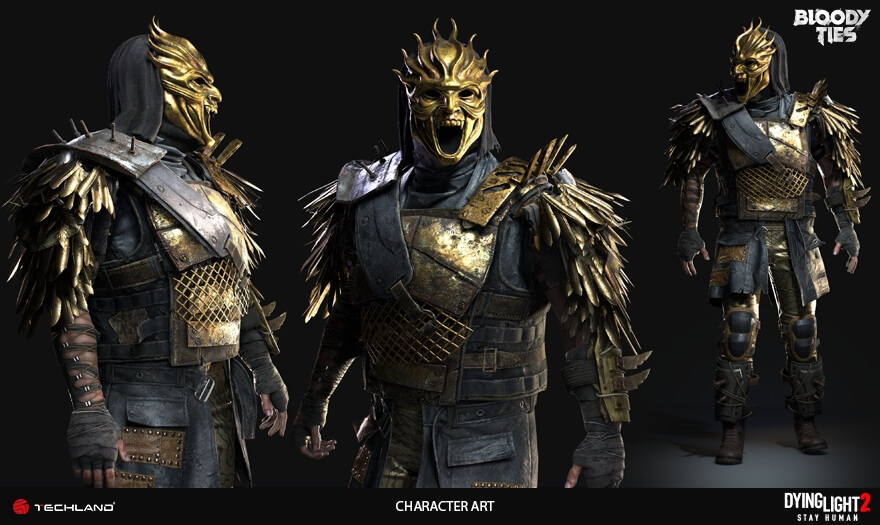
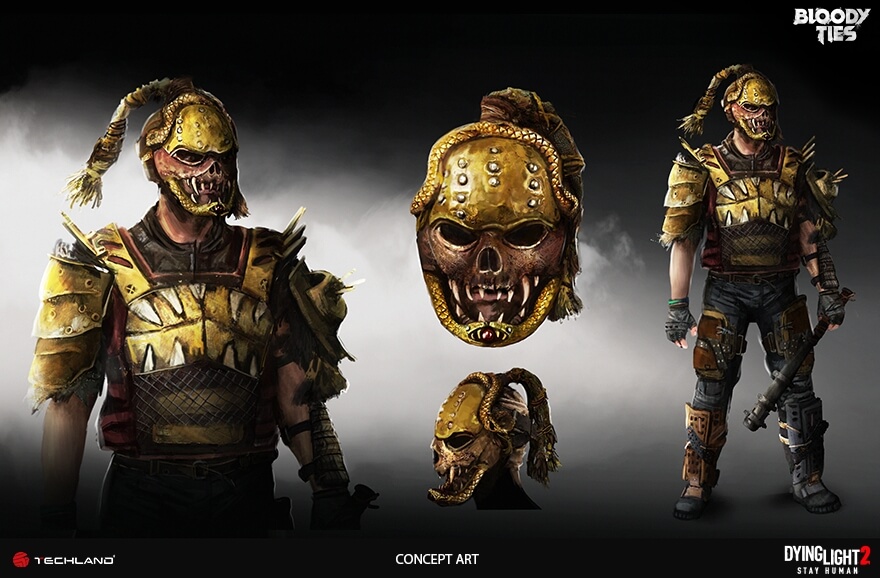
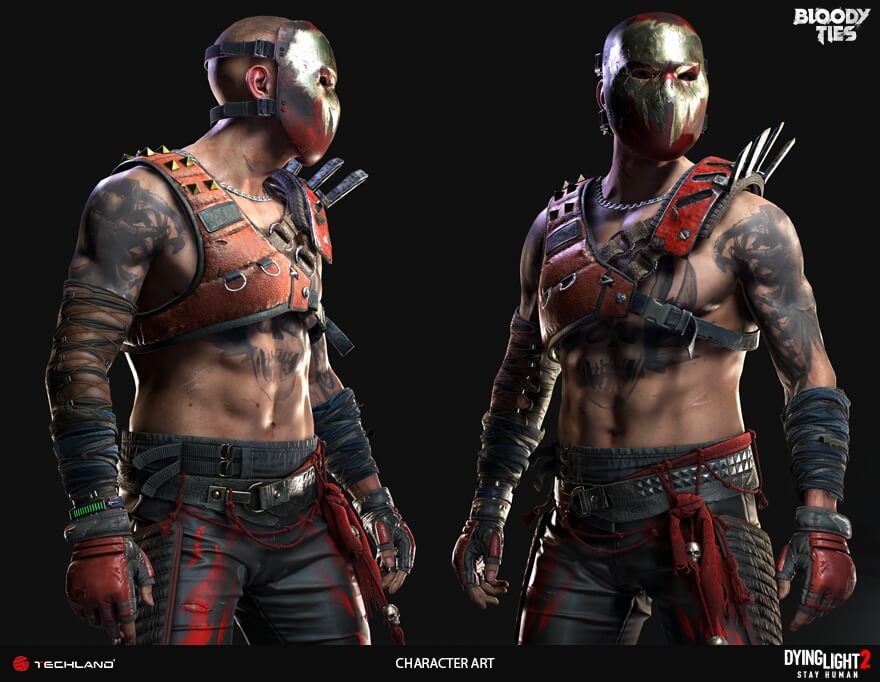
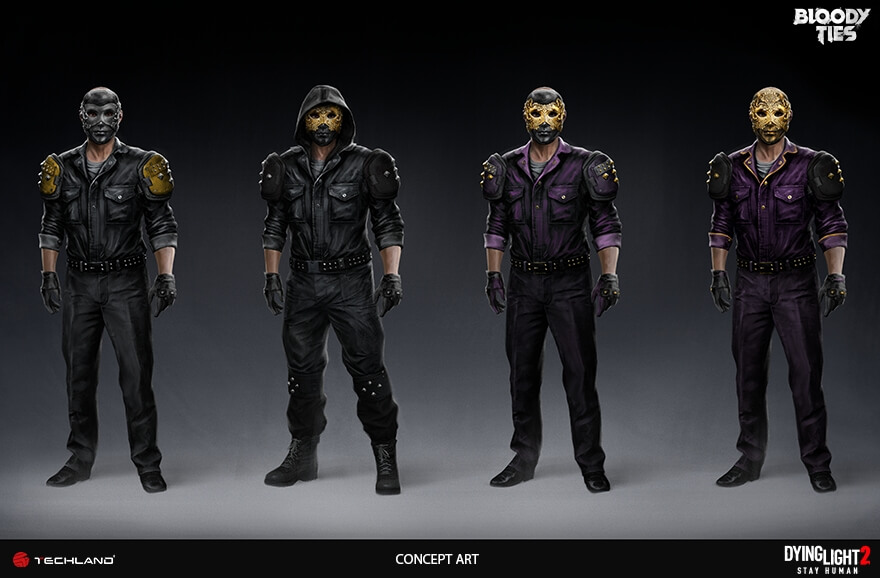

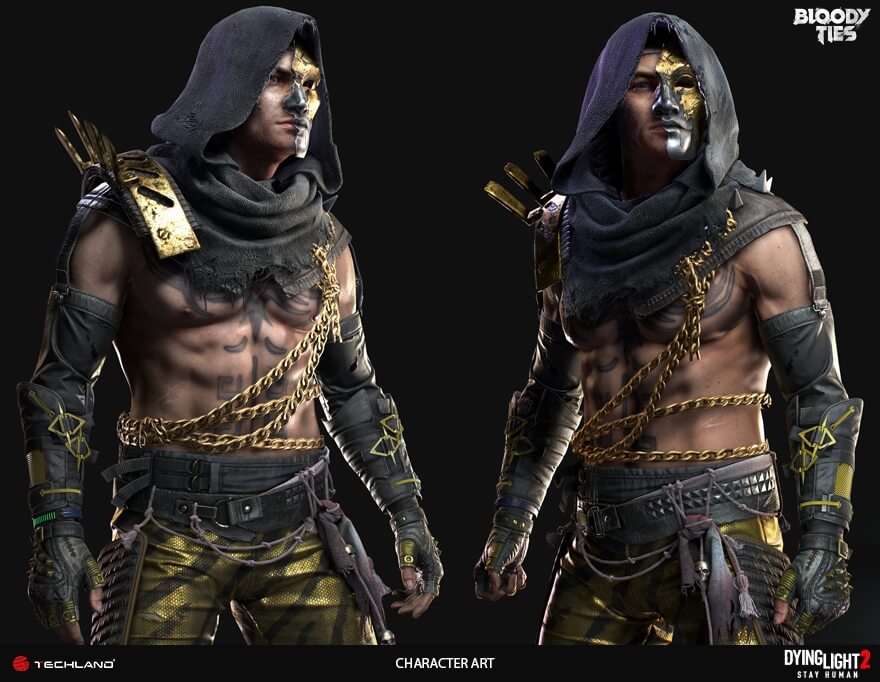
Were you given creative freedom while coming up with the characters? Or were you limited by the story of the game?
“The work behind every one of our characters starts with a short brief. During the meeting, the artists learn about the character’s background and story. We are also given a general description of how they are supposed to look.”
“Before we decide on a final concept, we cycle through different ideas; we prepare concept art and discuss whether the character that we came up with fits the description we were given. Are they actually believable enough for our players?” Adds Katarzyna.
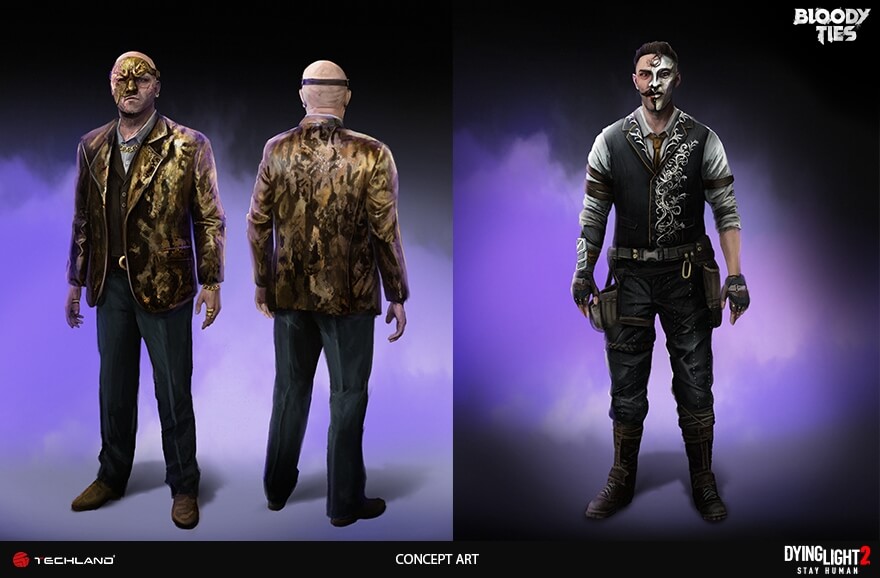

“That was the case with Skullface. The concept of him in his mask made out of a Volatile skull was just one of many that we’ve come up with. We’ve chosen it over the others because it embodied everything this character stood for – brutality and strength – and because it’s what we wanted to give to the player base”, explains Dominik.
What about the character’s outfits? Are those made out of remnants of the old world, just like everything else in the universe of Dying Light 2 Stay Human?
“Skullface’s outfit is made out of altered motorcycle clothing pieces, with added metal spiky pieces. It’s supposed to make him look inherently dangerous,” explains Wasieńko.
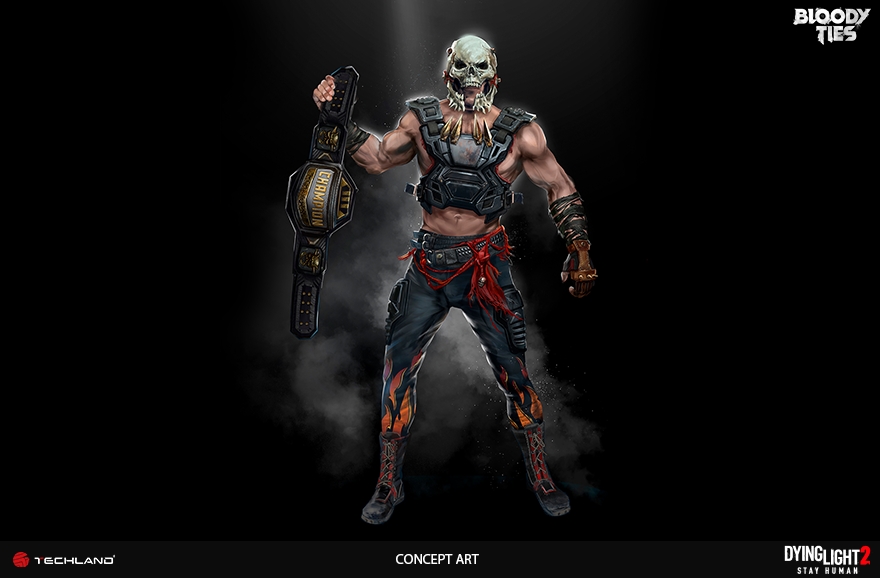
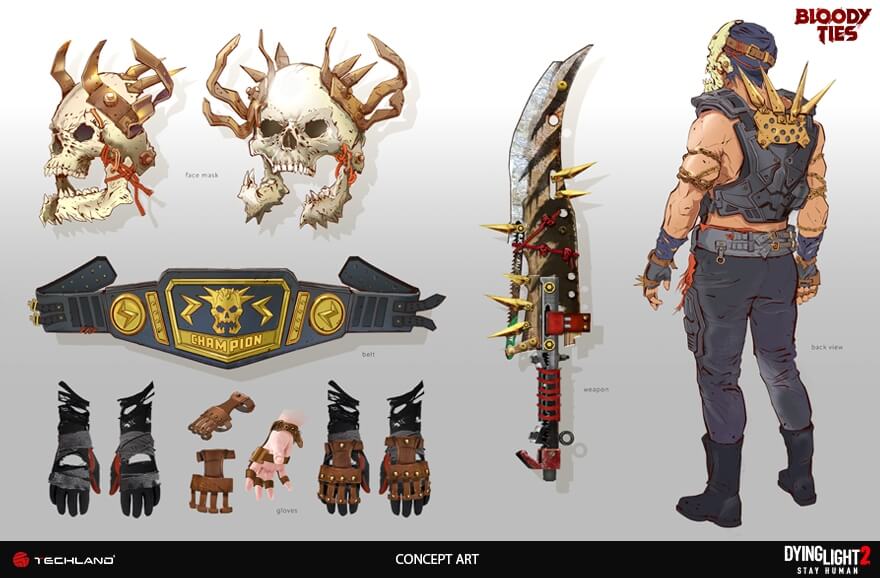
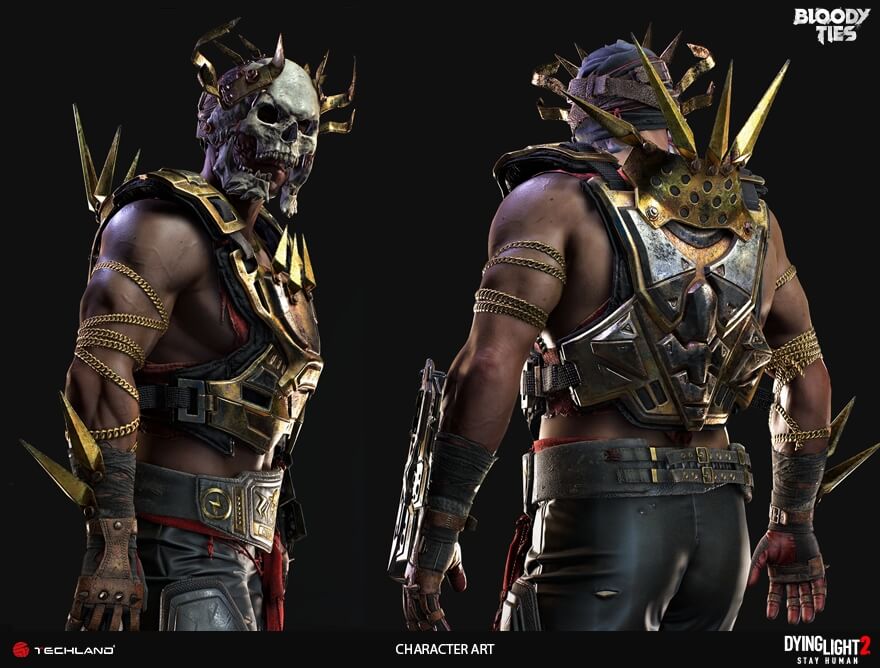
“Astrid, on the other hand, is an extravagant ex-TV broadcaster who's used to performing for people, so in her case we opted for bolder colors,” adds Katarzyna.
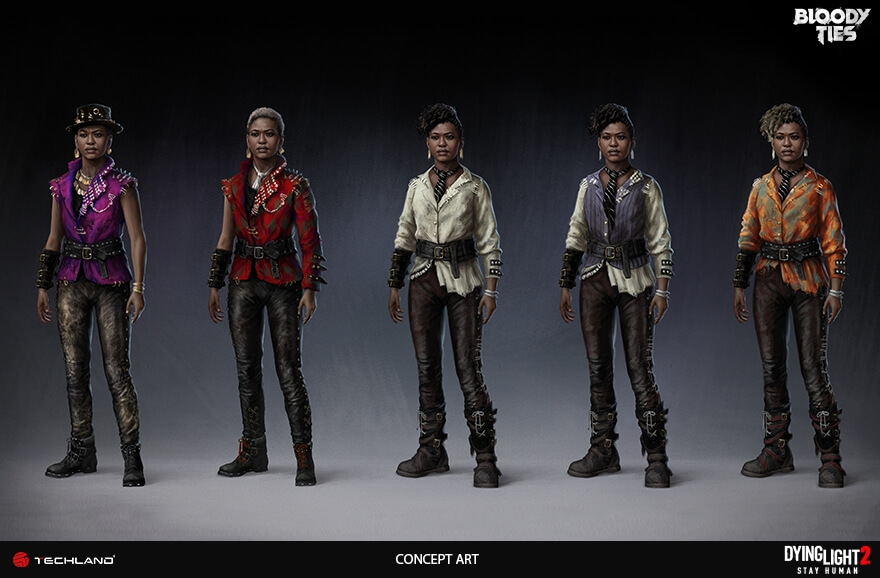
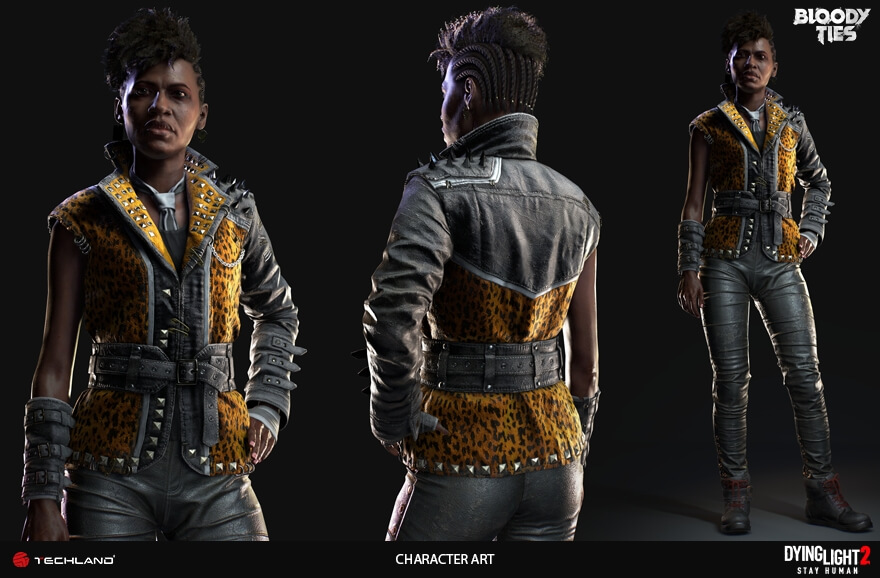
What would you say is the most interesting part of your job for someone who knows nothing about it?
“For me, it would be coming up with the characters’ concepts. Some might even say that we’re designing a character from scratch because even though we’re provided with a brief, we still have to immerse ourselves in their story and translate them into the world of our game. Our work is supposed to capture the archetype presented in the brief – through it, we’re supposed to show the players all the nuances of the character in a way that isn’t just black-and-white,” explains Bech.
“Designing villains is definitely easier, as there are many archetypes of evil and aggressive characters ingrained in our culture. It significantly simplifies our job as designers. Convincing the players that the given characters are aggressive is easy – we can do it through their clothing or even their posture. Good guys are more nuanced. Look at Ciro, for example – if you look closely, you can see that he has the same tattoo on his arm as his father. It conveys the strength of their relationship and his constant need for his father’s approval. Naivety, dreams, youthfulness – this is what we had to incorporate into his looks,” says Dominik.
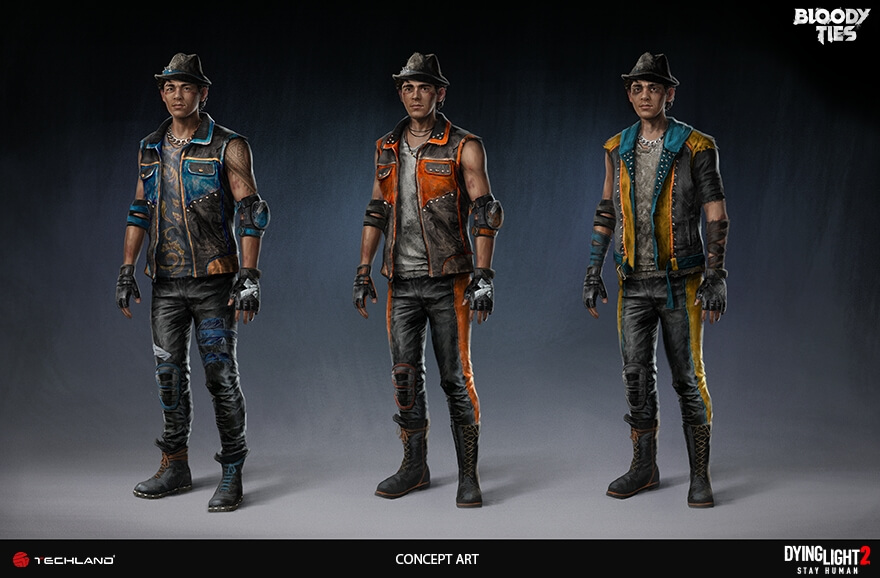

What are the cons of working as a character designer?
“Well, firstly, we develop some pretty weird habits,” Kasia laughs. “When I was working on designing faces, I often caught myself staring at others. It can cause different reactions in different people. But whenever I’m looking at someone, I tend to analyze their appearance, looking for their story that’s hidden somewhere within.”
“Additionally, to come up with believable concepts of the Infected, we often have to watch some really questionable materials, like ones picturing skin diseases. Even though they are kind of unpleasant to look at, they’re still one of our main inspirations during the design process,” adds Lead Character Concept Artist.
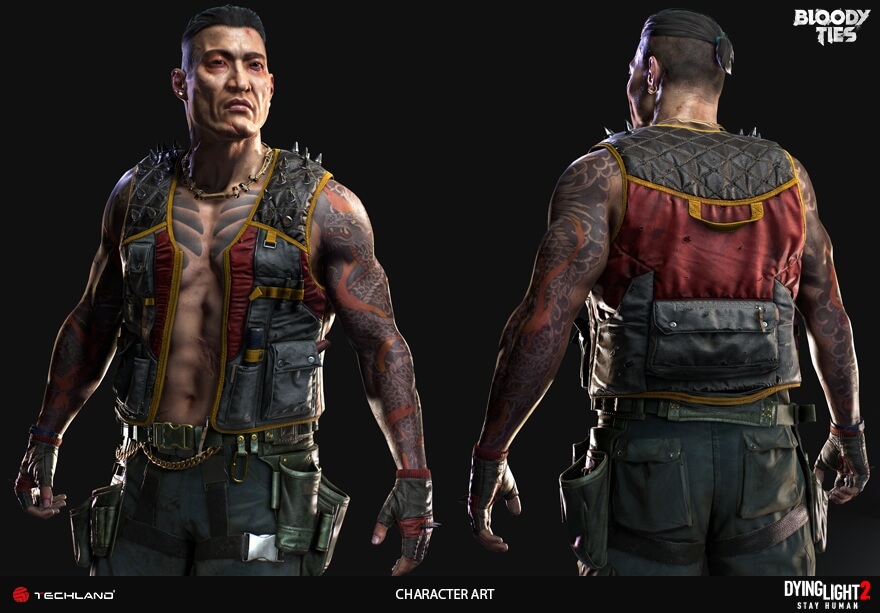
“It’s the same with injuries. Since we’re the ones who implement those effects into the game, we’re also the ones who have to watch that kind of stuff for it to look realistic,” explains Dominik.
What would you describe as your biggest challenge during the character design process for the Bloody Ties DLC?
“Implementing entertainment-related aspects into the post-apocalyptic world was the biggest challenge. The world as we know it today has fallen, but the people’s focus isn’t just on survival – they still want something more from life,” state both Kasia and Dominik.
